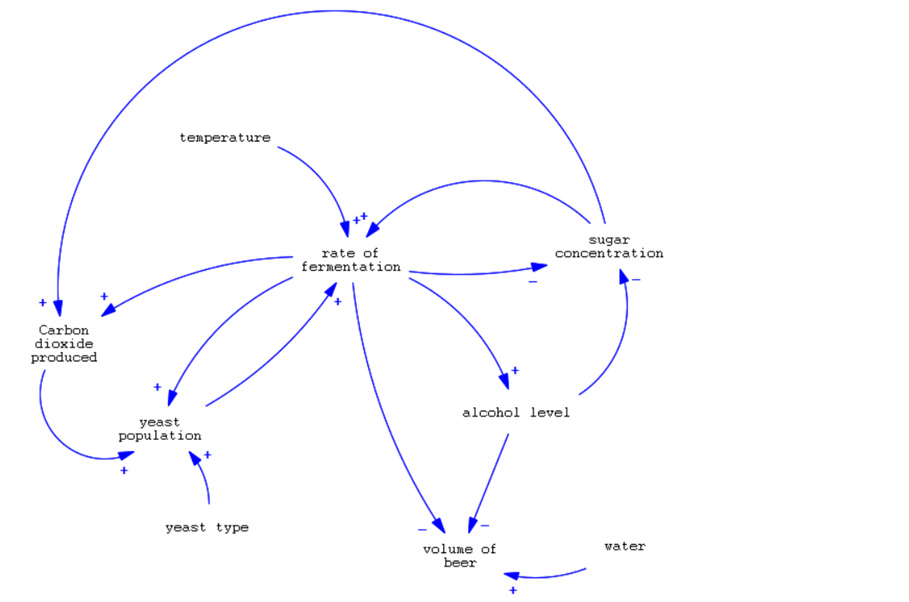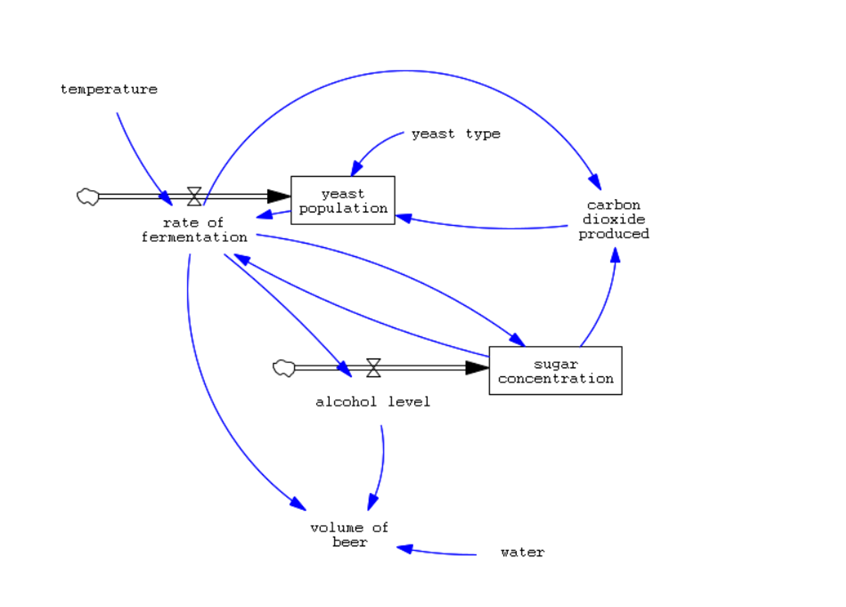Difference between revisions of "Factors that influence beer fermentation"
(→Method) |
(→Problem definition) |
||
| Line 9: | Line 9: | ||
=Problem definition= | =Problem definition= | ||
| + | |||
| + | Due to the complex interactions between internal and external variables, brewers continue to face crucial challenges in accurately regulating the alcohol content of beer fermentation. The final alcohol percentage is directly influenced by variables like sugar concentration, yeast type selection, and temperature fluctuations. This simulation attempts to give brewers a comprehensive platform to experiment with different scenarios to optimize their brewing procedures. This model aims to equip brewers with practical insights so they may make well-informed decisions for consistent and ideal alcohol levels by addressing the complex dynamics of beer fermentation. | ||
=Method= | =Method= | ||
Revision as of 23:50, 20 January 2024
Author: Adéla Dobešová, Doba00 (talk) 22:04, 20 January 2024 (CET)
Tool: Vensim
Contents
Introduction
This simulation focuses on addressing factors that have an effect on beer fermentation and influence the alcohol percentage in the final product. It should suit the brewery makers in the food industry to better evaluate beer-making conditions to make preferred outcomes of alcohol levels. This simulation was developed as part of the project for the 4IT496 Simulation of Systems class.
Problem definition
Due to the complex interactions between internal and external variables, brewers continue to face crucial challenges in accurately regulating the alcohol content of beer fermentation. The final alcohol percentage is directly influenced by variables like sugar concentration, yeast type selection, and temperature fluctuations. This simulation attempts to give brewers a comprehensive platform to experiment with different scenarios to optimize their brewing procedures. This model aims to equip brewers with practical insights so they may make well-informed decisions for consistent and ideal alcohol levels by addressing the complex dynamics of beer fermentation.
Method
The Vensim PLE modeling software was chosen for the solution of the above-described case.
Model
Results
Conclusion
Code
Sources
- https://www.phind.com/search?cache=uu8fcm0sqdc1fyznvi0o0rhx&fbclid=IwAR30Y-m8maeJI3WFcW-fLvqTlRov_63mfnCGPxC9RiANZQbkQaYNO8MDl0M
- https://science.howstuffworks.com/innovation/edible-innovations/beer4.htm
- https://www.researchgate.net/publication/284725490_Biochemistry_of_beer_fermentation
- chrome-extension://efaidnbmnnnibpcajpcglclefindmkaj/http://ucitelchemie.upol.cz/materialy/vkpch/vyroba_piva_text_pro_ucitele.pdf
- https://grainfather.com/beer-fermentation-process/#:~:text=Typically%20the%20cooler%20the%20temperature,unwanted%20attributes%20in%20the%20beer.
- Mosher, M., & Trantham, K. (2021). Brewing Science: a Multidisciplinary approach. In Springer eBooks. https://doi.org/10.1007/978-3-030-73419-0

